How To Find and Photograph: Canada Jays (aka Gray Jays) in the White Mountains
10th January 2022
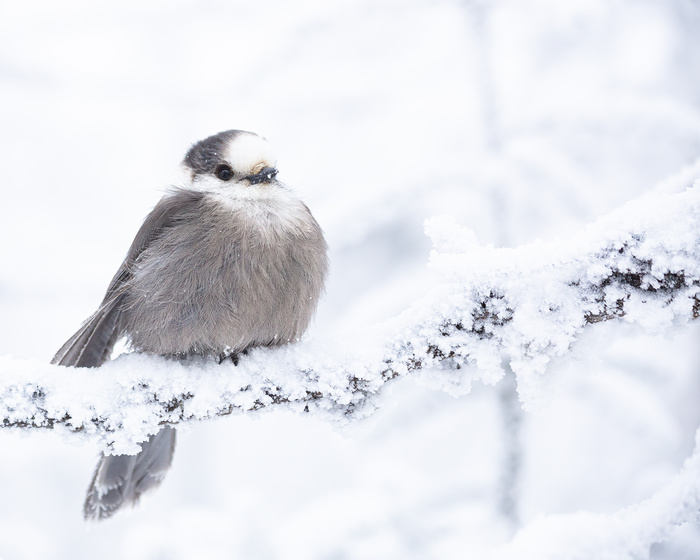
What’s my favorite bird in New Hampshire’s White Mountains? The Canada Jay (Perisoreus canadensis)!
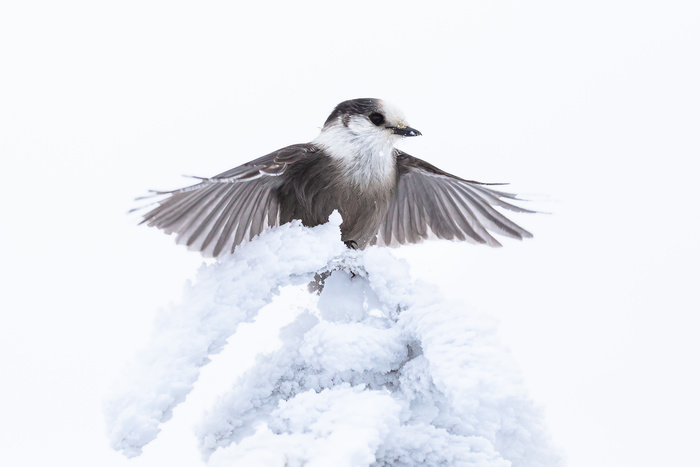
Better known locally as the Gray Jay, this bird is utterly adorable. But it’s also surprisingly tough. It is capable of hunting rodents, surviving temperatures of -30 degrees F, and nesting and laying eggs in those conditions at the height of winter. Even more unusual, they will fly right into your hand!
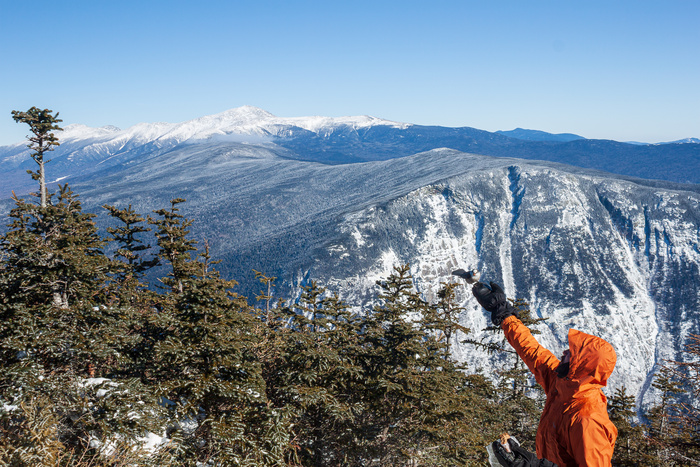
But should you feed them? To answer that question and find out why it is special to see this bird of the boreal forest so far south into New Hampshire, keep reading!
1. There aren’t too many places you can see Canada Jays in the lower 48.
Seeing Canada Jays (this is their official name as of 2019, but I will use the term Gray Jay interchangeably in this article also for those that might not realize that) makes me feel that I am in a northern wilderness and that is not an illusion.
Canada Jay habitat in the high elevation boreal forest of the White Mountains:
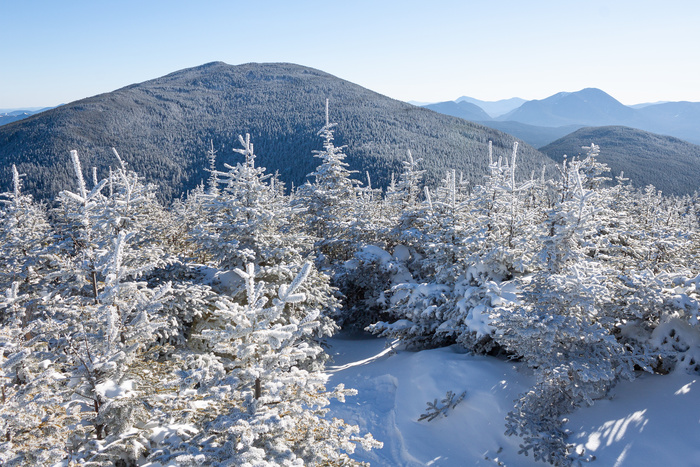
They are mostly found in Canada and Alaska in intact boreal forest and do not occur in urban or suburban areas. The boreal forest is the mainly coniferous forest dominated by spruce and evergreens that covers much of the land between the latitude of 45 and 70 degrees north.
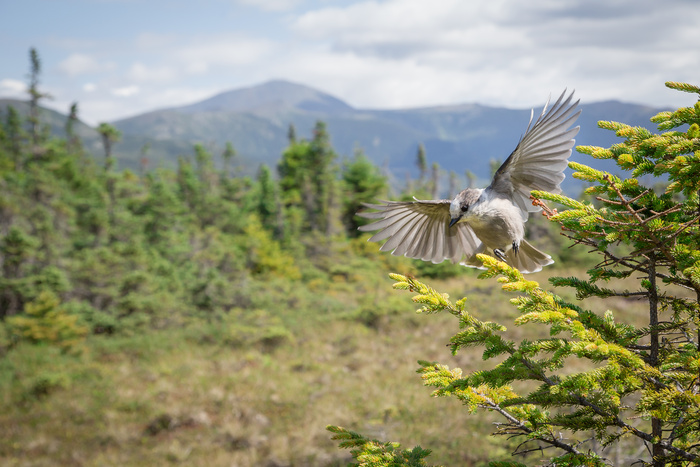
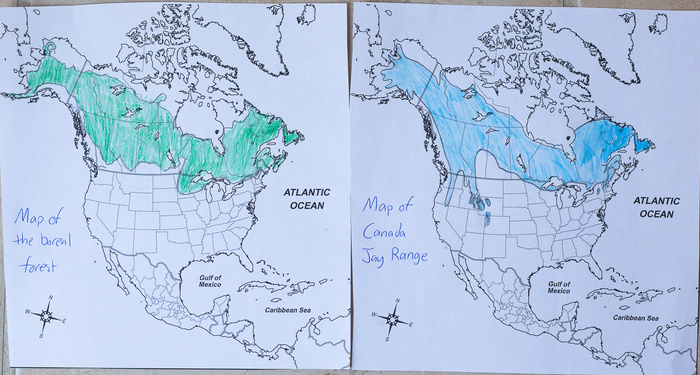
This habitat extends into some of the northern border states particularly in the higher elevation mountains of New England or the Rocky Mountains in the West and the Cascades in the Pacific Northwest. In a sense, the White Mountains of New Hampshire are like "boreal islands in the sky."
2. Canada Jays have amazing winter nesting and survival skills.
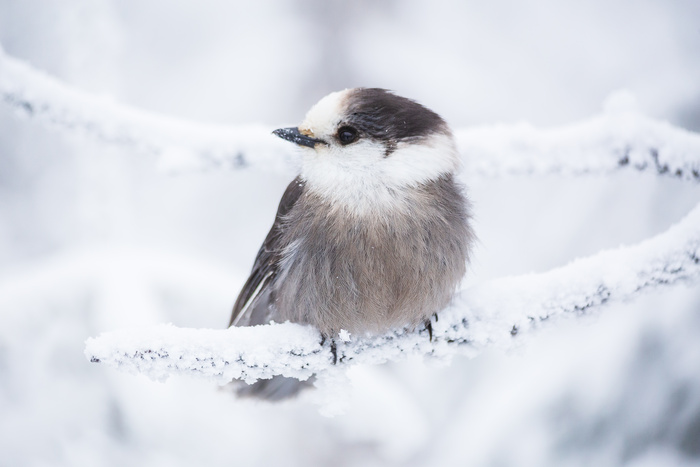
If you go hiking in the home of the Canada Jay in the White Mountains of New Hampshire in winter you get a whole new appreciation for the toughness of this bird. You won’t find them until you hit roughly the 3500 to 4000-foot elevation mark in the stunted subalpine spruce forest near treeline.
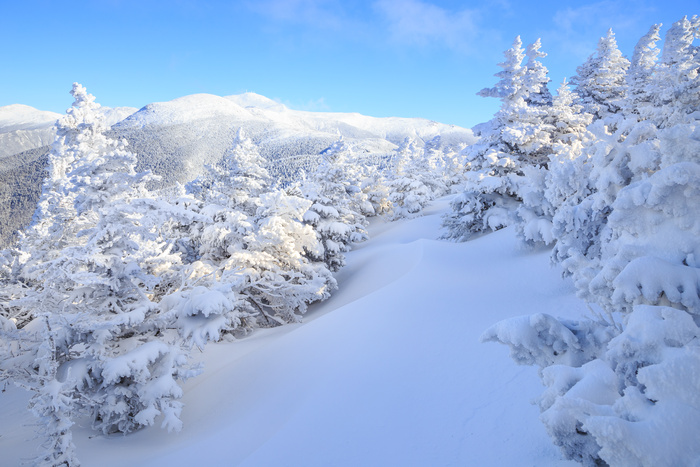
At this altitude air temperatures drop below the negative 20’s F. Feet of snow start accumulating by late October and last through May. The area is home to famous Mount Washington and the Presidential Range and the world’s worst weather. Winds regularly go between 100 - 180 mph and wind chills dip to -100 F.
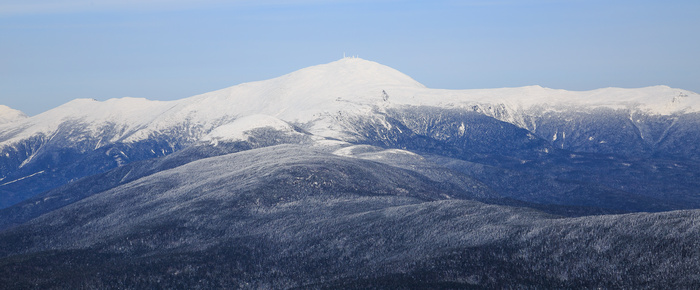
Gray Jays are equipped to deal with this cold with a thick layer of fluffy feathers.
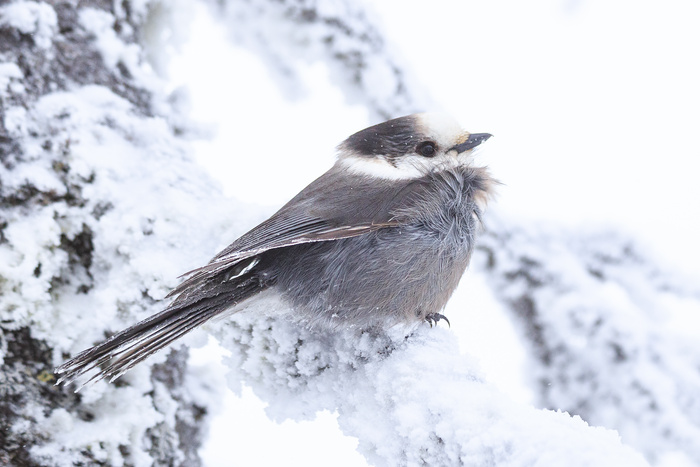
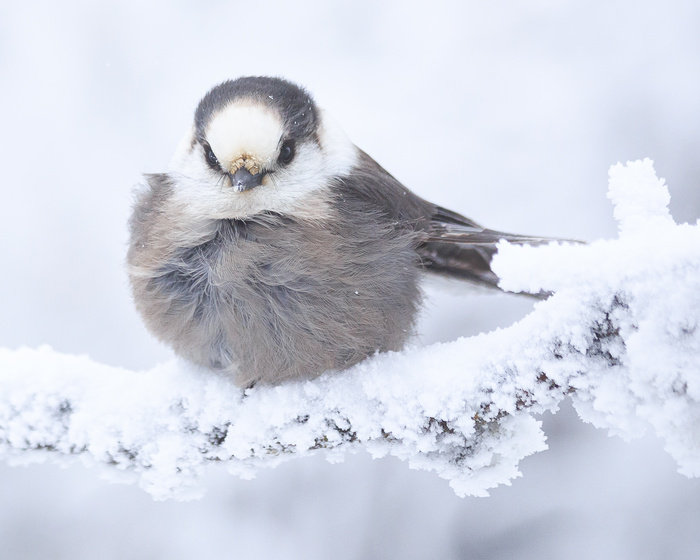
Feathers even cover most of their beaks, making them appear shorter than they really are.
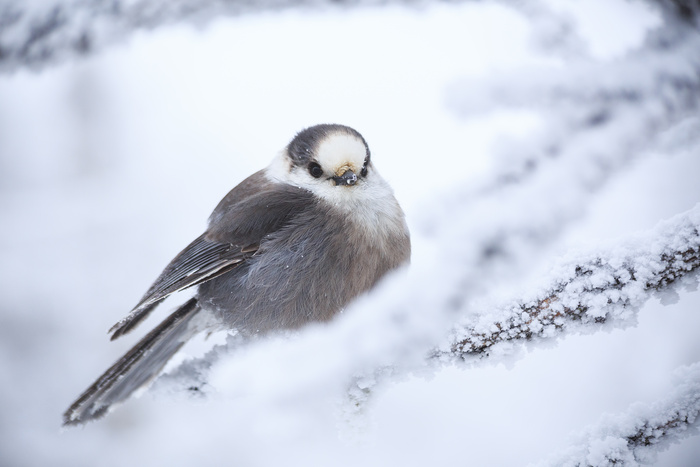
My favorite season to photograph the Canada Jays is in winter because I feel the resulting images best tell the story of the species thriving in this harsh environment.
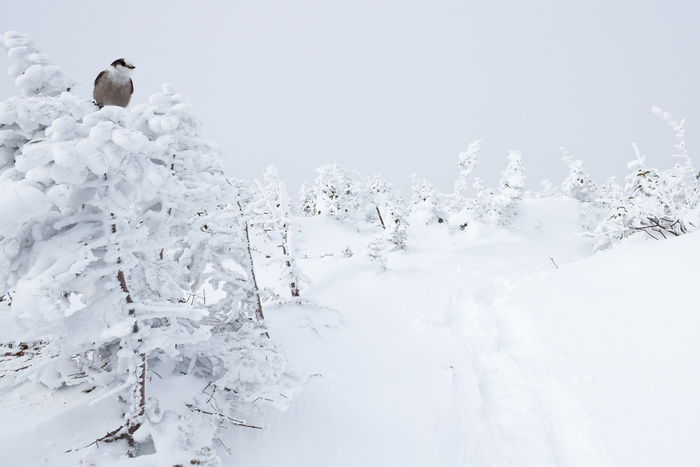
Not only do they survive up here, but they even nest in the middle of winter in February, lay eggs in March, and hatch early April!
At this time of year, the stunted spruce trees of the subalpine zone are frequently coated in rime ice.
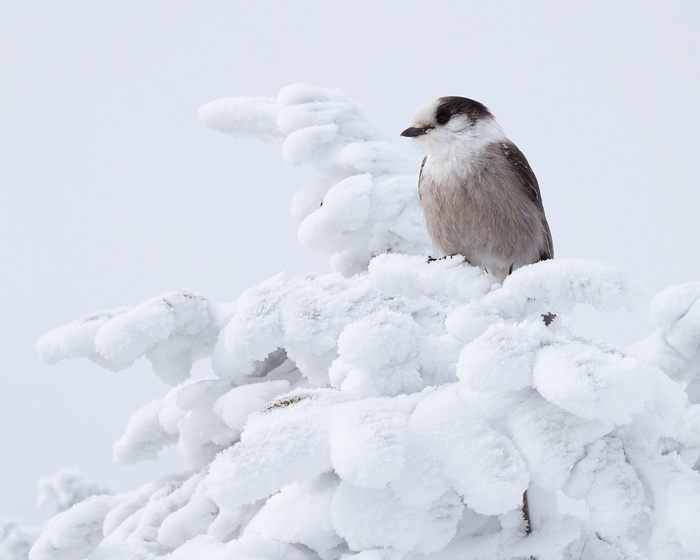
This is not snow, but feathers of ice that form when moisture in the air freezes on contact and accumulates in the direction from which the wind is blowing, sometimes creating ice feathers 1 to 2 feet long.
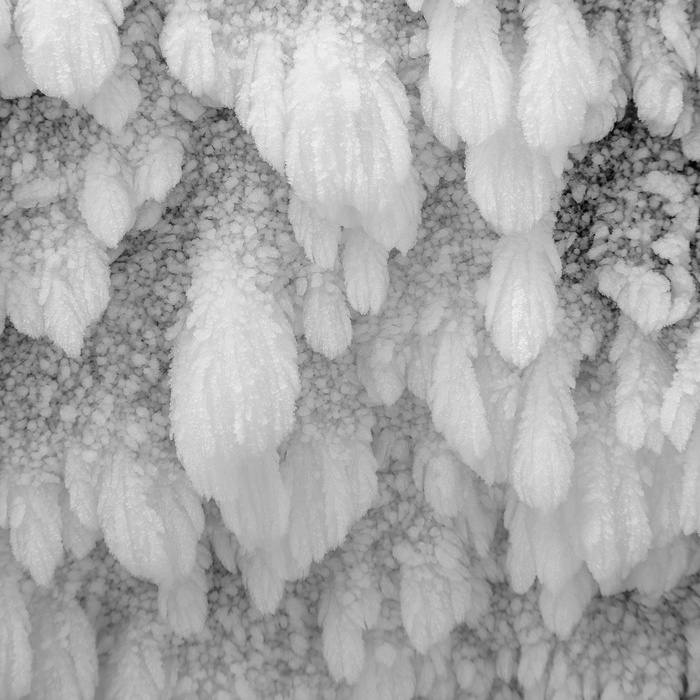
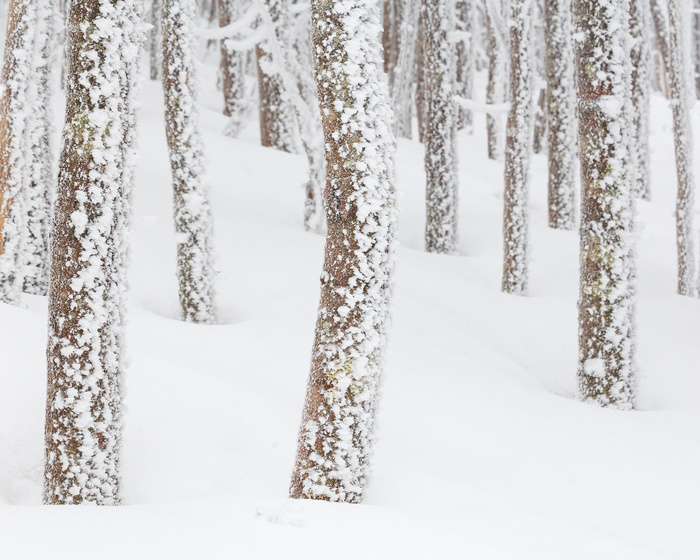
In a forest that is frozen over and buried in feet of snow, how is it possible to feed their chicks even if they can keep them warm?
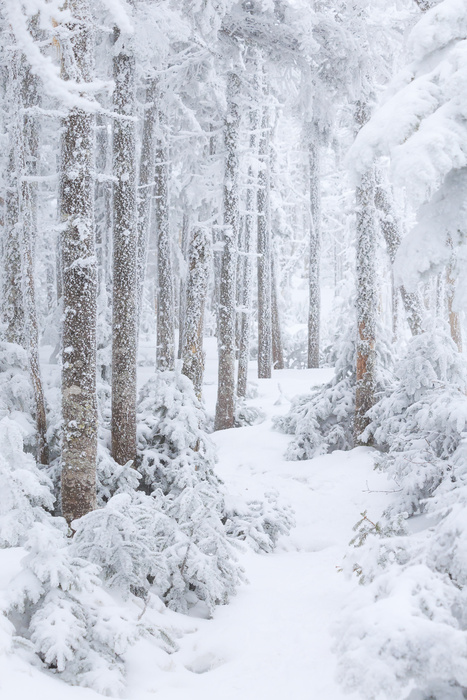
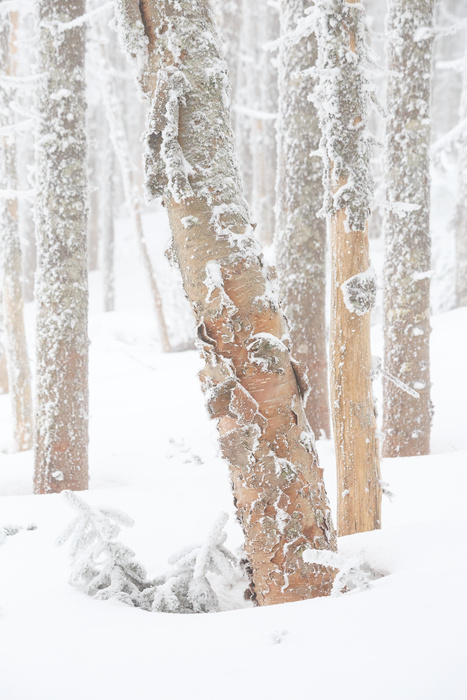
The answer lies in its food strategy to deal with surviving the winter and having a food source at hand at that time of the year to feed their young. Gray Jays cache food in the bark of trees in the winter.
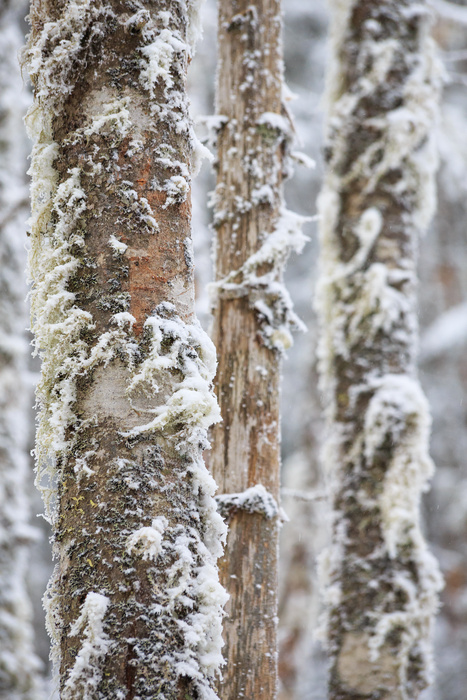
Members of the highly intelligent corvidae family (others are crows, jays, ravens) they have a great memory for where these caches are stored. In the lower elevation Algonquin Park in Ontario, Canada, a long running field study check (4 minute video) has shown that the population of Canada Jays has declined by 50 percent. Some speculation as to why is that winters have become warmer, with more thaws, and this might spoil their food caches. I wonder if that issue has affected the Whites?
Of course, if you have ever come across a Canada Jay in the wild, you know their other food strategy which is my 3rd point of what makes them special.
3. Canada Jays will fly right into your hand. But should you feed them?
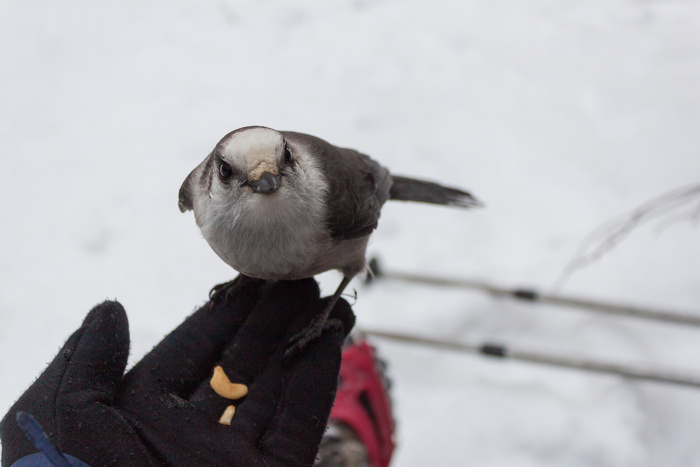
It's not often you can get a wild bird to fly right into your hand, but Canada Jays will do just that! In the White Mountains this practice is common among hikers. Earlier in my hiking career (nearly two decades ago) before “internet hiking,” I fed them and even thoroughly impressed my wife by delivering on a promise that I could get birds to eat out of her hand on a winter hike. But as I started to think about ethics, I wondered if it was the right thing to do.
There are two ethical frameworks that are relevant to answering this question.
The first is Leave No Trace ethics familiar to hikers which specifically states not to feed any wildlife. So if you are hiking the backcountry and follow this code (which is not a law, though some jurisdictions have actual laws against feeding certain species) it seems like it might be a clear “no” right off the bat. But does this really apply to birds though? What about bird feeders? Those birds are wild. Canada Jays do visit bird feeders at people’s homes in Canada.
In this case, another ethical framework that is useful to consider is the Audubon Society’s 3 step process to deciding whether it is appropriate to feed wild birds like the Canada Jay.
Three questions to guide ethical feeding of wild birds Audobon article.
1. Is this species at risk?
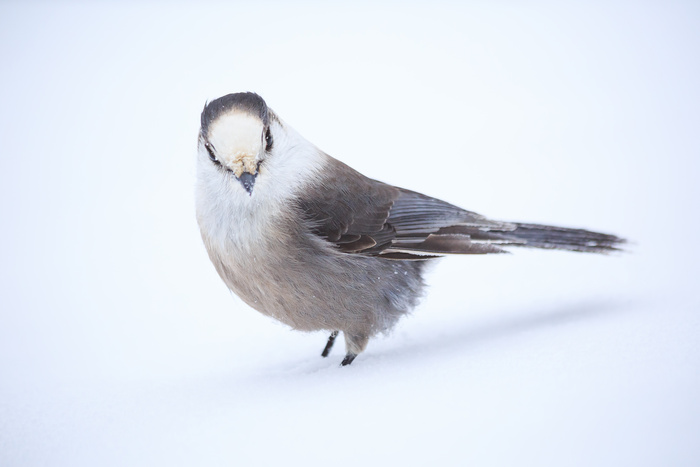
Canada Jay’s are not at risk, are listed as low concern conservation status, and have an estimated population of 26 million. You check the status of species at Cornell Lab of Ornithology or Audubon Society.
2. Is the food appropriate and safely provided?
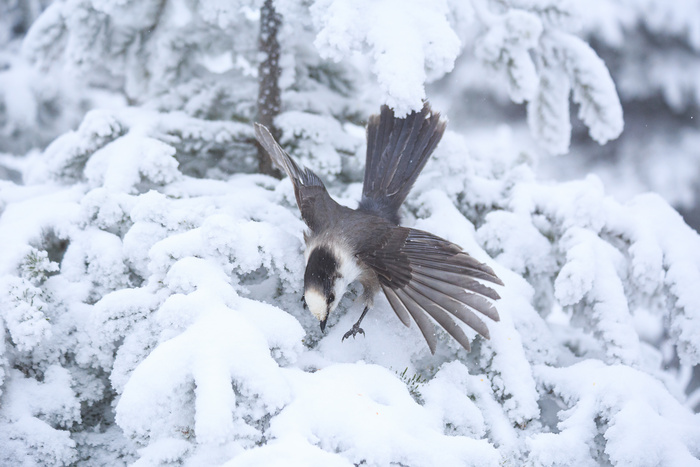
Canada Jays are not picky eaters.
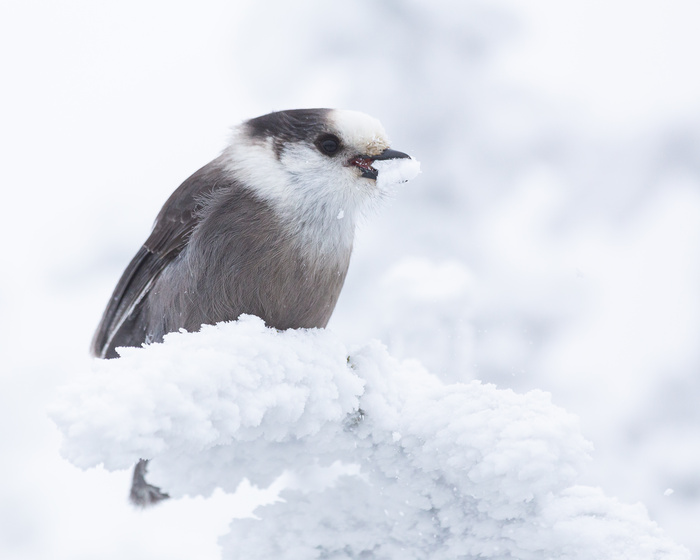
They are omnivores that will eat insects, spiders, berries, seeds, fungi, small rodents, birds' eggs, carrion, and purposely seek out human food. They will even attack rodents and small birds. Still, some human food isn’t good for birds such as bread or even possibly toxic like the caffeine in chocolate so it's best if you research ahead of time what they can eat. If you haven’t researched this ahead of time, it would be best not to feed them even if they will enthusiastically take the food.
Is hand feeding "appropriately provided"? That us leads to question #3 below.
3. Will feeding change this bird's behavior in harmful ways?
You know how seagulls mob people at the beach to get food and annoy everyone? That is what this test is about.
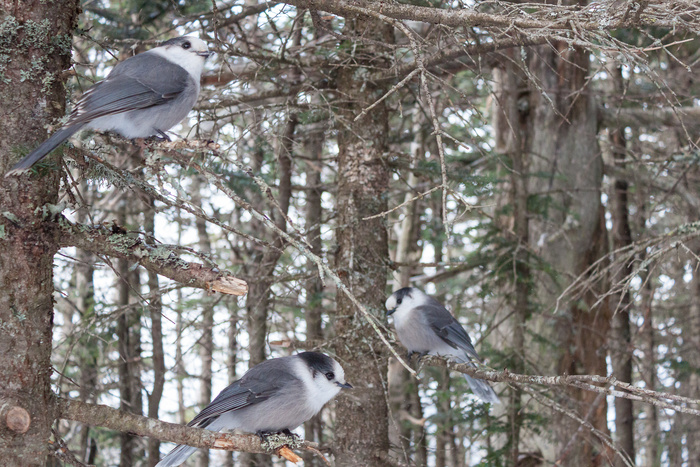
A little bit of that has been going on with the Gray Jays especially in the White Mountains at viewpoints, summits, and trail junctions where people stop.
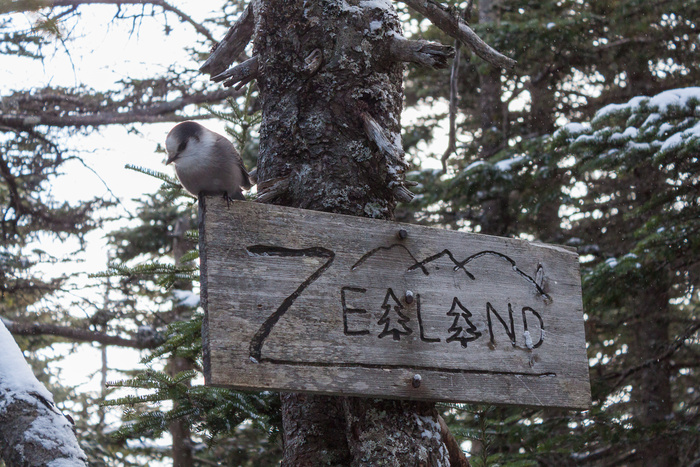
“Camp Robber” is another nickname of the Canada Jay and it is entirely appropriate. Canada Jays have actually been following humans around for thousands of years going back to the time before European settlement when only indigenous peoples lived in North America. Canada Jays learned they could get food by following humans. At this point this is universal behavior for the species regardless of location.
Will hand feeding this bird lead to danger for them? Would feeding them cause them to lose the ability to find natural sources and become dependent on human handouts? Would it draw them out in the open and endanger them to raptors? These are all questions to consider.
Conclusion: To Feed or Not to Feed?
In the end, I decided several years ago not to feed the Canada Jays anymore in the backcountry hiking context applying the principles of LNT. I don’t think feeding violates the Audubon framework however, so there may be contexts where feeding Canada Jays is ethical. But I am no expert. What do you think? Leave a comment below. Any wildlife biologists out there with a weightier opinion than mine?
I hope this article has inspired you to connect with the Canada Jay and it's boreal forest home. Thanks to the higher elevation terrain of the White Mountains and the remnants of the last ice age environment, those of us on the East Coast have a chance to experience what is normally a more northern environment and species close to home. If you see a Gray Jay now you know why it is so special to see one!
NOTE: I didn’t feed the Canada Jays featured in the main winter photos in this article. To be honest though, I did benefit from their conditioning to associate humans with food, and I knew they would fly to approach me when I arrived at certain spots. In other photos in this article, you can see that the birds were clearly fed. These were taken between 2004 and 2013 before I really thought about the ethics of such practice and was following local tradition. By using these photos, I am not endorsing hand feeding but wanted to illustrate my points.
Comments
 By Jennifer Long: Hi John,
I just want to say thank you for raising this issue of feeding Canada jays! My colleague and I at the University of Maine at Augusta started researching this question probably shortly after you posted this article! Canada jays are nest predators, so we were concerned that jays that are attracted to these popular "lunch spots" could be impacting the breeding birds in the spring. We studied the jays nest predation behavior by putting up artificial nests with game cameras. We are still analyzing our data from this last spring, but I can refer you to our google site (search Northeast Canada jay survey) for results so far, and our work will be featured on this season of the NH PBS show "Windows to the Wild" airing on Nov.7th. Episode 6 "A Bird in the Hand" is now available to Passport members. Thanks again! Jennifer
By Jennifer Long: Hi John,
I just want to say thank you for raising this issue of feeding Canada jays! My colleague and I at the University of Maine at Augusta started researching this question probably shortly after you posted this article! Canada jays are nest predators, so we were concerned that jays that are attracted to these popular "lunch spots" could be impacting the breeding birds in the spring. We studied the jays nest predation behavior by putting up artificial nests with game cameras. We are still analyzing our data from this last spring, but I can refer you to our google site (search Northeast Canada jay survey) for results so far, and our work will be featured on this season of the NH PBS show "Windows to the Wild" airing on Nov.7th. Episode 6 "A Bird in the Hand" is now available to Passport members. Thanks again! Jennifer